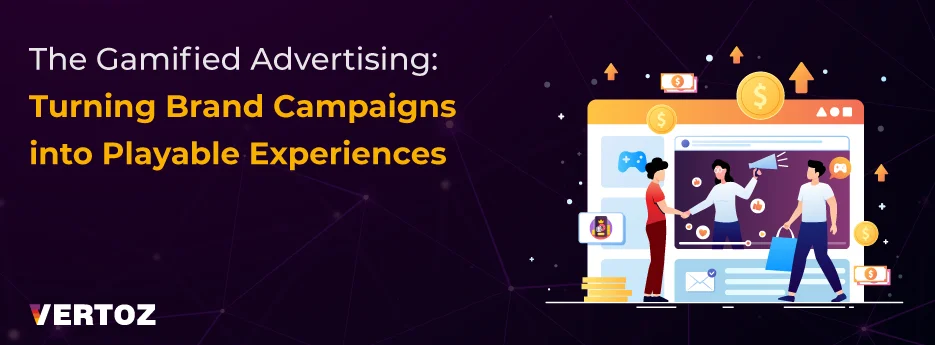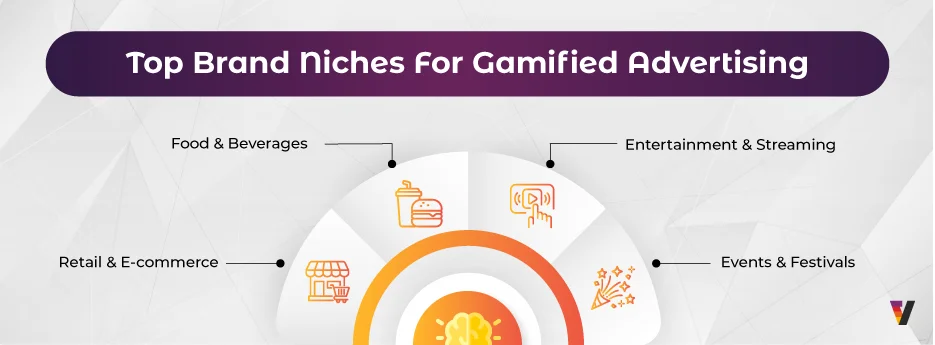In today’s crowded digital landscape, audiences are no longer satisfied with being passive viewers of ads. They crave interaction, immersion, and fun. This is where gamified advertising steps in as a powerful way for brands to transform traditional campaigns into playable experiences that not only capture attention but also drive deep engagement
Gamification in advertising isn’t about turning every brand message into a full-blown video game. Instead, it’s about borrowing elements of gameplay like challenges, rewards, leaderboards, or interactive storytelling to create campaigns that spark curiosity and involvement. Whether it’s a quiz that helps users discover the right product, a scratch-to-reveal discount, or an AR filter that adds a playful twist, gamified ads shift the relationship from brand-to-consumer into brand-with-consumer.
The beauty of this approach lies in how it transforms passive viewers into active participants. When people can interact, compete, or unlock rewards through your advertising, they’re no longer just consuming your message. They’re experiencing it, remembering it, and often sharing it with others. This creates a deeper connection that traditional advertising simply can’t match.
Table of contents:
Why Gamified Ads Work?
The magic of gamified advertising lies in psychology. People are naturally drawn to competition, achievements, and rewards. By adding these elements, brands tap into intrinsic motivators like curiosity, recognition, and satisfaction. Instead of interrupting users, gamified ads invite them to play, explore, and win. These types of games usually decide the consumer behaviour.
- Attention that lasts longer – Interactive play keeps users engaged far beyond the typical few seconds of a static ad. When people can click, swipe, or participate in your content, they naturally spend more time with your brand message instead of quickly scrolling past.
- Memorable experiences – When consumers actively participate in something, they form stronger memories around that experience. It’s the difference between passively seeing an ad and actually doing something engaging with your brand, which creates lasting mental connections.
- Shareability – Fun, interactive experiences are naturally more likely to be shared with friends and family, multiplying your reach organically. When people enjoy something, they want others to experience it too, turning your audience into voluntary brand advocates.
For example, a fashion brand could launch a “Style Your Festival Look” mini-game where users mix and match outfits virtually, letting them explore different combinations while discovering new products. Similarly, an FMCG brand could build a “Recipe Challenge” quiz that walks users through cooking scenarios while naturally recommending relevant ingredients and products along the way. These small interactive touches create big brand moments that stick with consumers long after the experience ends.
Real-World Use Cases of Gamified Advertising
- Retail & E-commerce: Spin-the-wheel discounts or product treasure hunts keep customers hooked while driving sales.
- Food & Beverages: Recipe-based quizzes or snack-tasting AR filters connect directly with consumer lifestyles.
- Entertainment & Streaming: Trivia contests or leaderboard challenges drive binge-worthy engagement.
- Events & Festivals: Interactive scratch cards, treasure hunts, or festive AR filters make seasonal campaigns more exciting.
Gamification works equally well across platforms, from mobile apps to DOOH screens and even Connected TV ads. That’s what makes it so versatile and future-ready.
The beauty of gamified advertising is that it adapts seamlessly to any platform or device. Whether someone encounters your interactive content on their smartphone during their morning commute, sees a playable ad on a large digital billboard while shopping, or engages with a game-like experience on their smart TV at home, the core appeal remains the same. This flexibility means brands can create consistent, engaging experiences that follow their audience wherever they go, making gamification not just effective today but perfectly positioned for whatever new platforms and technologies emerge tomorrow.
The Technology Behind Playable Ads
Modern advertising goes beyond creativity and is now powered by advanced technology. Interactive video formats, AR filters, VR experiences, and programmatic ad delivery work together to ensure gamified campaigns reach the right audience at the perfect moment. Programmatic platforms can even personalize game-based ads based on user behavior, making each experience feel custom-made.
Because at the end of the day, efficiency isn’t about spending less—it’s about making sure that every dollar you spend is working harder for you. And with the right approach, the growth potential is limitless.
The technology creates an effortless experience for consumers while complex systems work behind the scenes to deliver personalized interactive content based on location, preferences, and past behaviors. It’s this combination of creativity and technology that turns simple brand messages into engaging experiences people actually want to participate in.
How Brands Can Start?
- Start small: Gamified ads don’t need to be complex. Even simple quizzes or interactive carousels can deliver impact.
- Stay relevant: Ensure the gamified element connects to your brand’s story, not just entertainment for the sake of it.
- Offer value: Discounts, exclusive access, or recognition (like leaderboards) motivate users to play and share.
Vertoz: Powering Gamified Experiences
At Vertoz, we help brands turn creativity into performance. With our expertise in omnichannel advertising, DOOH, CTV, and programmatic solutions, we make gamified campaigns seamless across platforms. Whether it’s designing interactive ad formats, integrating AR filters, or delivering personalized experiences, Vertoz ensures your campaigns don’t just reach audiences instead they resonate betterly with the viewers.
In a world where attention is the most valuable currency, gamified advertising offers the perfect solution: turning ads into experiences. And when ads feel like play, consumers don’t just watch, they participate, remember, and return.


